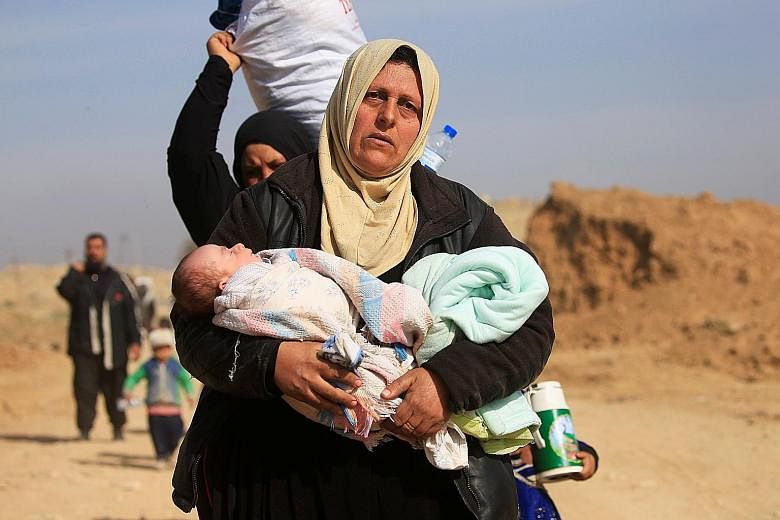MOSUL • US-backed Iraqi army units yesterday took control of the last major road out of western Mosul which had been in the hands of the Islamic State in Iraq and Syria (ISIS), trapping the militants in a shrinking area within the city.
The army's 9th Armoured Division was within 1km of Mosul's Syria Gate, the city's north-western entrance, a general from the unit told Reuters by telephone.
"We effectively control the road, it is in our sight," he said.
Mosul residents said they had not been able to travel on the highway, which starts at the Syria Gate, since Tuesday. The road links Mosul to Tal Afar, another ISIS stronghold 60km to the west, and then to Syria.
Iraqi forces captured the eastern side of Mosul in January, after 100 days of fighting, and launched their attack on the districts that lie west of the Tigris river on Feb 19.
If they defeat ISIS in Mosul, that would crush the Iraqi wing of the caliphate that was declared by ISIS leader Abu Bakr al-Baghdadi in 2014 from the city's Great Mosque.
The closing of the westward highway means ISIS is now besieged in the city centre, said Lieutenant-General Abdul Wahab Al-Saidi, the deputy commander of the Counter Terrorism Service (CTS), which is deployed in the southwestern side.
Mr Jassem Mohammed Al-Jaff, the Minister of Displacement and Migration, said in a statement yesterday that field teams received "26,000 displaced people from (west) Mosul during the past 10 days".
Units from the elite United States-trained division battled incoming sniper and anti-tank fire as they moved eastward, through Wadi Al-Hajar district, and northward, through Al-Mansour and Al-Shuhada districts, where gunfire and explosions could be heard.
These moves would allow the CTS to link up with the Rapid Response and Federal Police units, which are deployed by the riverside, and to link up with the 9th Armoured Division coming from the west, tightening the noose around the militants.
"Many of them were killed, and for those who are still positioned in the residential neighbourhoods, they either have to pull back or get killed as our forces move forward," said Lt-Gen Saidi.
Two militants lay dead near the field command of the CTS, in the Al-Mamoun district which looked like a ghost town. A few hundred metres away, a car bomb was hit by an air strike.
The few families who remained in Al-Mamoun said they were too scared to leave as the militants had booby-trapped cars.
Women cooked bread over outdoor ovens, while men gathered on street corners as helicopters flew overhead, strafing suspected militant positions further north.
Several thousand militants, including many who travelled from Western countries, are believed to be in Mosul - among a remaining civilian population which was estimated at the start of the offensive to number 750,000.
The militants are using mortars, sniper fire, booby traps and suicide car bombs to fight the offensive, carried out by a 100,000-strong force made up of the Iraqi armed forces, regional Kurdish peshmerga fighters and Iranian-trained Shi'ite Muslim paramilitary groups.
The United Nations has put at more than 176,000 the total number of people displaced from Mosul since the offensive started last October. Aid agencies put the number of killed and wounded, both military and civilians, at several thousand.
REUTERS, AGENCE FRANCE-PRESSE

